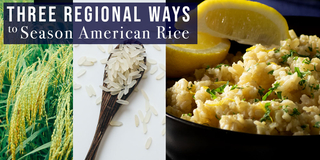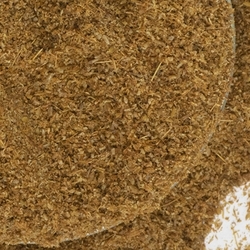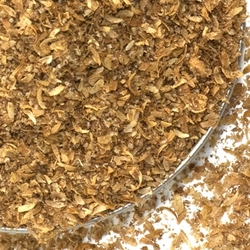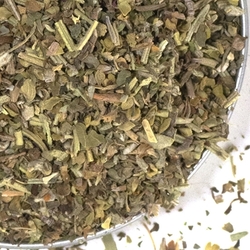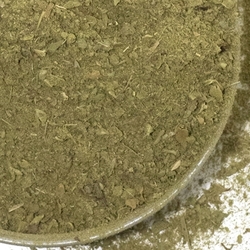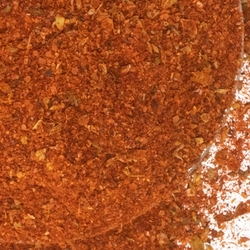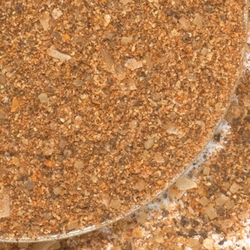Three Regional Traditions to Seasoned American Rice
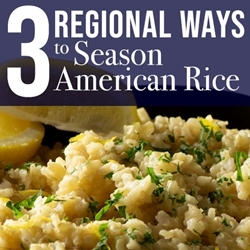
Rice is found in cuisines around the globe, an irreplaceable ingredient that often defines a particular culinary style by the manner in which it is used. There are over 40,000 varieties of rice in the world, but with the exception of wild rice—which is not really a rice, but we’ll get back to that in a few moments—none of it is native to North America. The cultivation of white rice didn’t start in earnest in the US until the very early part of the 18th century. Rice farming became a major economic force in the Southern states for more than 150 years, then moved inland to the prairie states. The southern-central US still dominates rice production today.
The rice dishes that take precedence in the North American culinary scene are the reflection of regional cultural influence and local products. Rice in all its guises has made its way around the US as a favorite side dish and a great blank slate for delicious, saucy dishes to rest on, but there are regions of North America that recognize rice as an important foodstuff on its own. First we’ll go to north toward the Great Lakes and into Canada, then swing down to the American South, before heading west to California.
Table of Contents
Why Was Rice Grown in the South
The History of California Rice
The History of Wild Rice
Wild rice, Zizania palustris, is unrelated to conventional white rice. It grows naturally in the marshy areas that surround the Great Lakes and has been a staple food of Native American tribes across the northern US and up into Canada for hundreds of years. The seed of a semi-aquatic grass, wild rice has a thicker hull and a chewy center that swings between nutty- and vegetal-tasting. It is a staple food of the Native Americans; members of the Ojibwe tribe call it manoomin, “good berry”, and it holds powerful spiritual and physical significance among native people. Wild rice was the answer to a prophecy, as the Ojibwe followed a vision that brought them to the land where food grows on water. Traditionally, manoomin is harvested at the end of summer, then dried and stored for use in religious ceremonies, or for food over the cold winter months.
Seasonality figured heavily into the way wild rice was originally prepared. It was stored alongside winter pantry items like jerky, smoked or dried meats, lard, dried berries, nuts, corn, winter squashes, and overwintering vegetables like onions and carrots. Wild rice was primarily cooked with the hearty foods next to it on the shelf, so dishes made with wild rice were high-calorie foods meant to sustain a body during the cold weather. Aromatics, like the wild onions that are found in abundance around Lake Michigan, and hard-shelled squash like crookneck or butternut, would bring sweetness to a dish. Toasted acorns or hazelnuts would add texture and a savory element to rice. Berries could be sweet like blueberries or tart like sumac, and meats and lard would bring fatty, savory flavors.
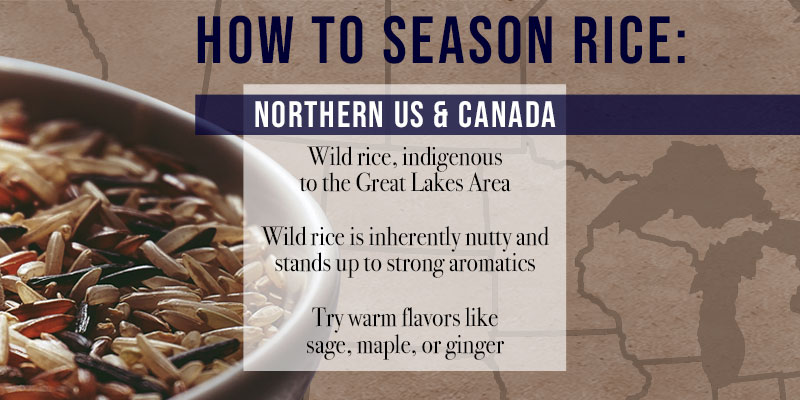
Seasoning Wild Rice
Today, we demand less of aromatic vegetables and sweet berries to carry the flavor load. Wild rice, with its sturdy exterior, should be paired with hearty seasonings that won’t dissipate during cooking or get lost against the nutty taste of the rice itself. Provide the rice with a base of flavor—sauté some onions and a bit of garlic to put down the first layer of flavor. Then stir in a great, hearty seasoning. Beef Brisket Rub, with its rich combination of chile peppers and mustard, lends warmth and welcome to a winter meal. Adding Poultry Seasoning, fragrant with bold herbs like velvety sage and the pine-forward scent of rosemary, both smells heavenly and elevates the flavors of the rice.
Aside from wild rice, all rice found in North America was originally imported. The variety of rice that dominates today’s global markets and is the preferred rice throughout much of the American South is the hardy, disease-resistant Oryza sativa. O. sativa emerged in Asia and can now be found in a staggering number of varieties all around the world. Long grain O. sativa, the kind of rice most likely to be used by Southern cooks for daily use, is three to five times longer than it is wide and depending on the strain, can be fragrant and sweet or mildly grassy.
History of Rice in the South
O. sativa was introduced to the South in 1685, first taken off a steamer from Madagascar and planted by Henry Woodward in Charleston, South Carolina. It adapted happily to the boggy regions of the low country and despite some initial agricultural failures, North American white rice cultivation was born. By 1700, South Carolina exported 400,000 pounds of rice annually; by 1720, thanks to the knowledge of African slaves who had grown rice in their home lands, and innovations in irrigation, South Carolina was exporting approximately 20 million pounds of rice each year, and at its peak was exporting 80 millions pounds.
By the 1880s, rice production along the southeastern seaboard suffered a precipitous fall. A multi-pronged series of events composed of the end of the civil war and its attendant financial struggles, the end of slavery, an incredibly prolific hurricane season in 1880, and the invention of harvesting machines that increased productivity but couldn’t operate in the muddy low country soil, and the completion of a rail system drove rice production west to the plains of Louisiana, Texas, and Arkansas, where it still is centered today. As rice traveled through the South, it was incorporated into a variety of Southern diets. Most long grain white rice used in the US is not the star of the dinner plate but rather, is a supporting player that relies on seasoned sauces or stews to create flavor.
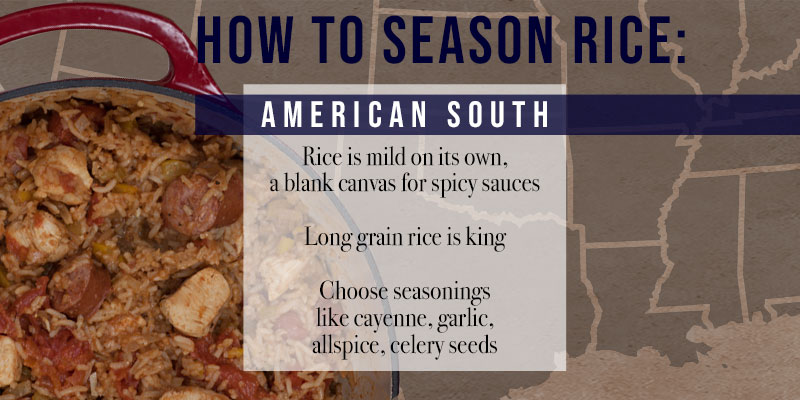
Why Was Rice Grown in the South
Rice was the first major economic crop grown in South Carolina, finding successful root in the damp valleys of South Carolina’s low country. When it was initially planted, rice crops were often meager or even failed, but England paid well for rice and the allure of trade was strong, and with that came the incentive to keep working at rice until they got it right. Once slaves from western Africa—a region known as the “Rice Coast”—were put to work in the paddies, rice was husbanded into enormous profit for the landholders. This then prompted the establishment of more rice plantations along Georgia’s boggy coast.
Seasoning Southern Rice
Southern rice dishes tend to be sauce- or gravy-based, particularly those with a heavy Cajun and African influence. Cajuns had established themselves in the South by the very early 1800s and employed an expansive willingness to fuse their knowledge and skills with local resources, creating a cultural shift that still exerts its presence today. Cajuns helped originate New Orleans classics like Red Beans and Rice, with the beans and sausage or pieces of pork simmering in broth, ladled over fluffed-out long grain rice. Jambalaya, another Cajun classic from the American south, cooks the rice in a stew spiked with a seasoning blend made of cayenne pepper and aromatics like onion and bay leaf. Jambalaya has a cousin in South Carolina’s spicy, aromatic purloo, a dish with African roots that’s a Southern spin on shrimp pilaf. For a modern take, you can celebrate two of Arkansas’s top three crops—rice and corn—with a salad that’s mixed with black beans and heavily seasoned with Ground Cumin and Ground Coriander, and tossed in a cumin and chipotle vinaigrette.
Rice farming in California is a relatively new endeavor; it is only a little over a century old, while the cultivation of O. sativa began at least 8,000 years ago. Some estimates say cultivated rice was being grown 13,000 years ago! Thus, California rice has earned significant recognition in a very short period of time. The overwhelming majority of California rice is grown in the Sacramento Valley, which offers a Mediterranean climate and slow-draining clay that creates the perfect environment for short- and medium-grain rice.
The History of California Rice
California did not begin successfully growing rice for commercial use until 1912, but endeavors in rice farming began in 1848-49, with the start of the California gold rush. People from all over the country and, indeed, from all over the world made their way to California once the news of “gold in them thar hills” captured the public’s imagination. Many of the ‘49ers and the laborers that came to build railroads and work the mines in California at that time were Chinese immigrants. The demand for rice swelled as the Asian population grew. Small- and homestead-sized rice farming enjoyed some success, but not enough to supply the 54 million pounds of rice consumed annually, so rice had to be imported. Large-scale attempts to grow the kind of long-grain rice that’s common in Chinese cuisine met with repeated failure. In 1906 the US Department of Agriculture sent agronomist William Wylie Mackie to California to test the soil, and thanks to Kenji Ikuta, one of Mackie’s associates and a Japanese immigrant, they determined the soil was not hospitable to long grain rice but would be excellent for short- and medium-grain japonica strains of O. sativa.
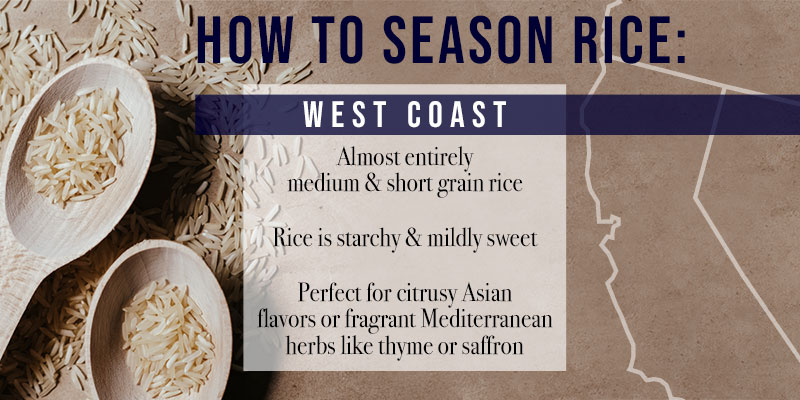
What is California Rice?
Medium-grain Japonica strains comprises between 85-90% of the California rice harvest and can be found in literally every sushi restaurant in the US. Both medium and short grain strains are stubby; the medium grain is 2-3 times as long as it is wide, while shorter varieties are only a tiny bit longer than their width. These varieties are often lumped together as though they were the same, which can create some confusion. While they may share similar characteristics, they are not the same thing. Both grain lengths have high starch content, making them inherently sweet and naturally sticky. Short-grain rice is great for desserts and was traditionally used in sushi. Medium-grain rice is slightly less sticky, though it does clump as it cools, and is well-suited for dishes with Asian and Spanish or Italian influences. This makes it perfect to use in California cuisine.
Why is California Rice Important?
It’s easy to see why California rice is a significant cash crop. Grown on more than 550,000 acres of land, California rice provides more than 25,000 jobs to the state and brings in $5 billion in revenue to the state. The flooded rice fields also provide food and habitat for 230 different kinds of wildlife, from the environmentally threatened Giant Garter Snake to the common but majestic Great Blue Heron. More than 7 million water birds take winter refuge in the California rice lands, which provides ample food and shelter for the birds to winter safely. By conservative estimates, it would take more than $1 billion to replicate the habitat that California rice fields normally provide for such an astonishing array of wildlife.
Seasoning California Rice
California cuisine focuses on fresh, local ingredients and fun, fusion-oriented inventiveness. It’s a playground for new takes on traditional food. This freewheeling foodie spirit that gave us the California roll, a uramaki, or “inside out”, sushi, rolled with local Dungeness crab and avocado. Normally, sushi rice is seasoned simply with sugar, salt, and toasted sesame seeds, but it can always be amped up with something sweet and simple. If summer vegetables are in season, twist up a California-style vegetarian paella, with medium-grain rice and all the light, seasonal vegetables your pan can hold. Or stir a heaping teaspoon of Italian Seasoning into a risotto made rich with cheese and avocado salsa, and dig into the creamy comfort of the California sun.
Hungry for more information?
Indian Food: More than Just Curries
Spanish Spices and Herbs
Asian Spices and Seasonings
8 Healthiest Cuisines in the World

